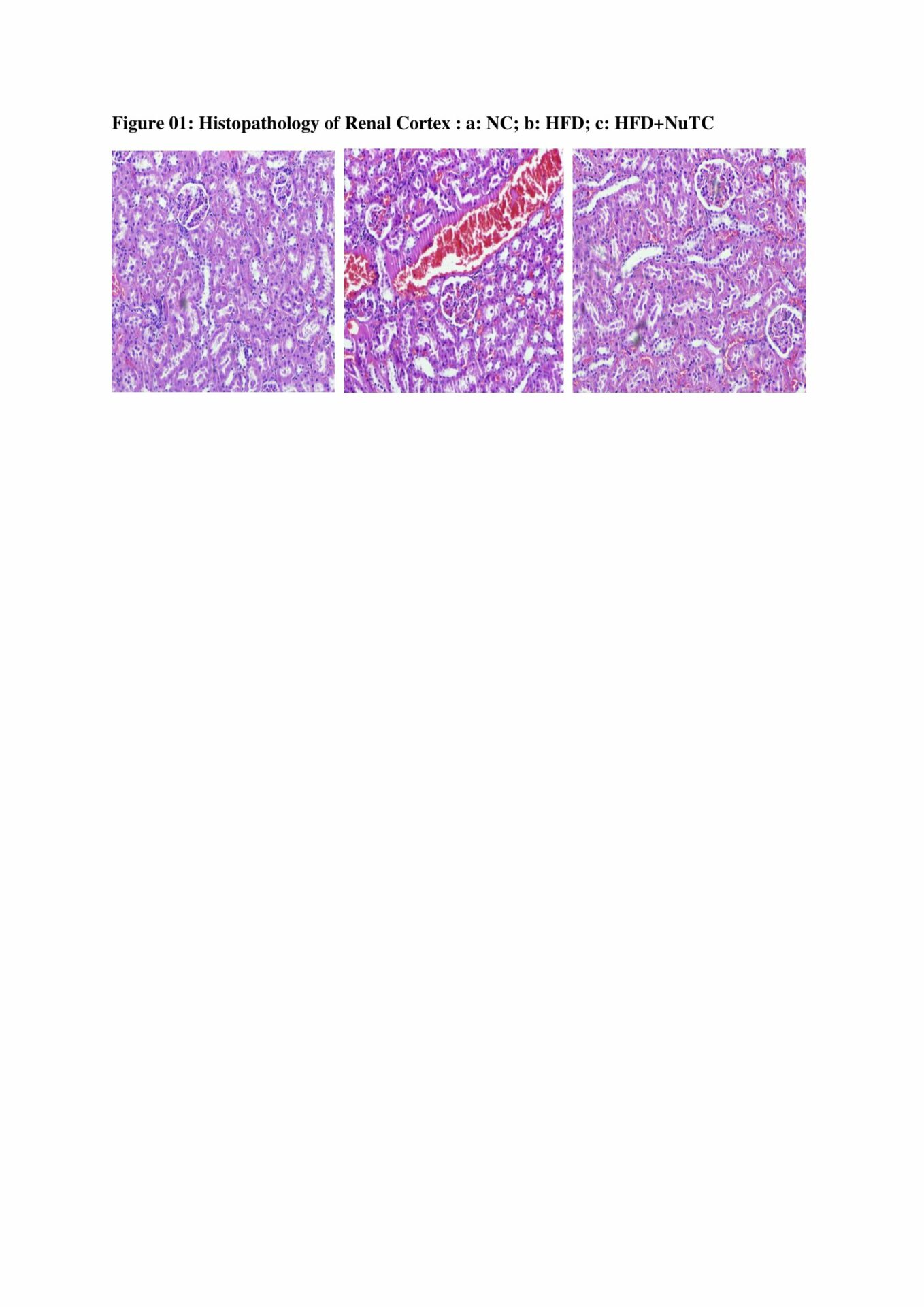Introduction: Globally, Obesity is found to be a separate risk factor for kidney damage, according to research using rat models. Nutraceuticals have garnered considerable interest in obesity research due to their role in etiopathogenesis. In addition to their potential nutritional, safety, and therapeutic effects, they provide various health benefits, including the prevention and treatment of diseases. Nutrition is also recommended as a therapy for managing CKD by KDOQI guidelines.
Aim: The study aims to investigate whether the developed nutraceutical combination (NuTC) is effective in preventing high fat diet (HFD) -induced chronic kidney disease in obese Wistar rats, by assessing physiological, biochemical, and histopathological indices.
Methodology: The protocol was approved by the Institutional Animal ethical committee ( IAEC/KMC/66/2019). Obesity was induced in male Wistar rats by feeding with a high-fat diet for 11 months and studied the effect of change in nutrition on kidney functions. Rats were randomly assigned to one of three diets containing regular chow diet (Standard control- NC), HFD infused with lard ( Disease control- DC), and NuTC(intervention group) (6 animals in each group). The diet used for intervention was made using locally available barley, fish oil, moong bean, flax seed, and foxtail millet. Blood samples were collected for renal functional measurements (urea and creatinine), and kidneys were examined for histological evaluation to study the variation across 0-90 days. Jamovi 2.3.21 is used to analyze the data statistically.
Results: After 90 days, the rats in the HFD group had significantly higher body weight compared to NC (p< 0.001) and HFD+NuTC (p <0.001) groups. Similarly, the rats in the HFD group had significantly higher U (77.26±4.89) and Cr (1.34±0.38) in mg/dL compared to NC and HFD+ NuTC (42.41±2.87, 0.488±0.04) respectively. Thus, compared to the HFD group, the intervention group had a significant decrease in body weight and renal functions (p<0.001). The NC group showed normal renal articulator (Figure 1a); the HFD diet group showed renal cortex with cellular glomeruli with endocapillary congestion and adjoining tubular system showing luminal hyaline cast with congestion of stromal arterioles (Figure 1b); and HFD+NuTC group showed renal cortex with cellular glomeruli with endocapillary congestion and adjoining tubular system appearing unremarkable with congestion of the stromal arterioles (Figure 1c).
Conclusion:
Pharmaceutical therapy is the most common modality to reduce the CVD burden in CKD. Although pharmaceuticals aim to treat oxidative stress, inflammation, and nephropathies in CKD, they have inherent limitations, as they exhibit adverse side effects. Components of the nutraceutical prepared in our study also contain omega-3 fatty acids, protein, fiber, vitamins, and minerals that help recover from kidney damage due to obesity. Overall our study observed a statistically significant (p <0.05) reduction in body weight and an improvement in renal function tests in NuTC group compared with the DC group.
To conclude, the combination of nutraceuticals developed shows evidence of improvement in both obesity and renal functions in high-fat diet-induced obese Wistar rats.

